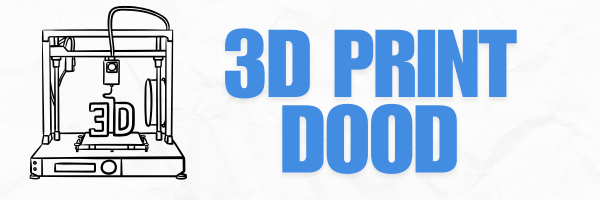When it comes to 3D printing, choosing the right filament is just as important as selecting the right printer. Different filaments offer varying strengths, finishes, and durability, so understanding the top-rated options can make a big difference in your prints. Here’s a guide to some of the best filaments on the market, loved by the community for their quality, ease of use, and reliability.
1. PLA by Hatchbox
Hatchbox PLA is a popular choice for good reason. Known for its ease of use and consistent quality, this filament is great for beginners and pros alike. PLA is one of the easiest filaments to print with because it has low warping and doesn’t require a heated bed, and Hatchbox delivers a reliable product with rich colors and a smooth finish. It’s perfect for general-purpose prints, prototypes, and decorative pieces.
Pros: Affordable, easy to print, consistent results
Cons: Not heat-resistant, lower durability than some other filaments
2. PLA+ by eSUN
If you’re looking for a stronger version of standard PLA, eSUN’s PLA+ offers increased durability and slightly higher flexibility. This filament retains the ease of use of regular PLA but gives your prints a bit more strength, making it ideal for parts that need to withstand more wear and tear. eSUN PLA+ is known for its high quality, minimal warping, and excellent adhesion.
Pros: Stronger than standard PLA, affordable, easy to print
Cons: Slightly more brittle than other materials like PETG
3. PETG by Prusament
Prusament PETG is highly rated for its quality and consistency. PETG combines the ease of PLA with the strength of ABS, offering excellent durability and heat resistance. This makes it great for functional parts, outdoor applications, and anything that needs a bit more resilience. Prusament’s PETG has excellent bed adhesion and is less prone to warping than ABS, making it a reliable option for a wide range of projects.
Pros: Durable, heat-resistant, good bed adhesion
Cons: Can be stringy, requires a heated bed
4. ABS by Overture
If you need a tough, impact-resistant material, Overture ABS is a solid choice. ABS is known for its strength and heat resistance, making it perfect for functional and mechanical parts. Overture offers a high-quality ABS that’s well-reviewed for its consistency and reliable performance. However, ABS does require a heated bed and good ventilation due to fumes, so it’s best suited for users with a more advanced setup.
Pros: Strong and heat-resistant, ideal for functional parts
Cons: Requires a heated bed and ventilation, can warp without an enclosure
5. TPU by SainSmart
SainSmart TPU is one of the most highly regarded flexible filaments on the market. TPU (thermoplastic polyurethane) is known for its flexibility, making it ideal for parts that need to bend, like phone cases, gaskets, or wearable accessories. SainSmart’s TPU is durable, with excellent layer adhesion and smooth extrusion, although it may require slower print speeds. It’s great for users looking to experiment with flexible materials.
Pros: Flexible and durable, excellent layer adhesion
Cons: Can be tricky to print, requires slower speeds
6. Nylon by Taulman 3D
When strength and durability are a priority, Taulman 3D’s nylon filament is one of the best options available. Nylon is incredibly tough and resistant to impact, making it perfect for high-stress parts. Taulman offers a range of nylon filaments, each designed for different applications, but all are known for their durability. Printing nylon can be more challenging due to its high tendency to absorb moisture, so it’s recommended to use a filament dryer for best results.
Pros: Extremely strong and impact-resistant, great for functional parts
Cons: Absorbs moisture easily, requires high temperature and possibly a dryer
7. Wood-Filled PLA by ColorFabb
If you want a unique finish, ColorFabb’s wood-filled PLA adds a beautiful wood-like texture to your prints. This filament is PLA mixed with wood fibers, creating a realistic wood appearance and feel. It’s easy to print with and works with most PLA-compatible printers, though it may require a larger nozzle to avoid clogging. ColorFabb’s wood filament is perfect for decorative items, models, or anything that needs a natural, rustic look.
Pros: Wood-like finish, easy to print, unique texture
Cons: Can be abrasive on nozzles, slower printing speeds recommended
8. Carbon Fiber PLA by Proto-pasta
For those looking for added strength and a sleek matte finish, Proto-pasta’s carbon fiber PLA is a top choice. This filament is PLA infused with carbon fibers, making it more rigid and lightweight than regular PLA. It’s excellent for parts that need extra stiffness, like RC car frames or drone parts, and produces a professional-looking matte finish. Carbon fiber PLA can be abrasive, so using a hardened steel nozzle is recommended.
Pros: Rigid and lightweight, attractive matte finish
Cons: Requires a hardened nozzle, more expensive than standard PLA
Each of these filaments offers unique benefits and is well-regarded in the 3D printing community. From easy-to-use PLA for everyday projects to specialized materials like TPU, wood-filled PLA, and carbon fiber PLA, these options cover a wide range of needs. Choosing the right filament can help you achieve the results you’re looking for and take your 3D printing projects to the next level. Happy printing!
